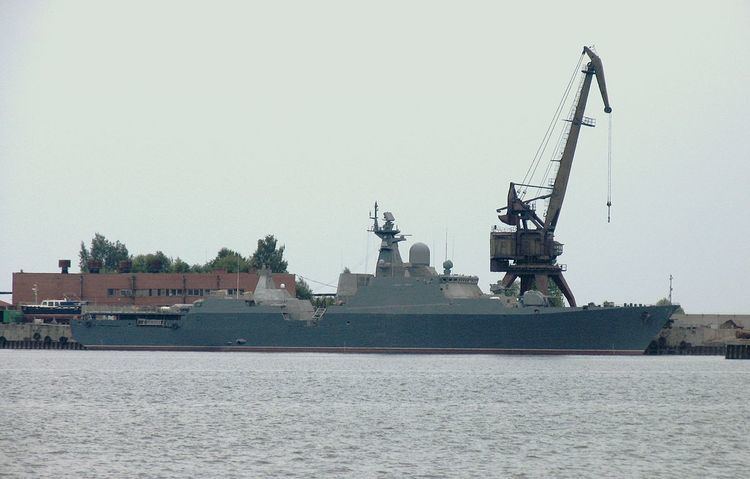Building 2 | Built 1991– | |
 | ||
Name Gepard class (Project 1166.1) Builders Zelenodolsk Shipyard/Zelenodolsk Plant named after A.M. Gorky (Зеленодольский завод имени A.M. Горького) | ||
The Russian Gepard-class frigates (Project 1166.1) is a class of frigates that were intended as successors to the earlier Koni-class frigates and Grisha, and Parchim-class corvettes. The first unit of the class, Yastreb (Hawk), was laid down at the Zelenodol'sk Zavod shipyard at Tatarstan in 1991. She was launched in July 1993, after which she began fitting out; fitting was nearly completed by late 1995, when it was suspended due to lack of funds. Renamed Tatarstan, the ship was finally completed in July 2002, and became the flagship of the Caspian Flotilla. She has two sister ships, Albatros (renamed Dagestan), and Burevestnik (Storm Petrel), which was still under construction as of 2012.
Contents
Design
These vessels are capable of employing their weapons systems in conditions up to Sea State 5. The hull and superstructure are constructed primarily of steel, with some aluminium-magnesium being used in the upper superstructure. They are equipped with fin stabilizers and twin rudders, and can use either gas turbines or diesel for propulsion in a CODOG configuration.
Export models
The Gepard class was designed from the outset as a lightweight, inexpensive export vessel. The Russians have offered five variants for foreign sale.
The Vietnam People's Navy received in March and August 2011 two Gepard 3.9-class frigates ordered in 2006, built in Russia at Tatarstan's Gorky Shipbuilding Plant. As of 2012 Vietnam was examining a purchase of two more, possibly built in Vietnam under license. In late 2011 Vietnam signed a contract for an additional batch of two ships in an anti-submarine version. A further two ships were ordered in 2014 to bring the total order up to six vessels.
Service
In October 2015, Dagestan, in company with three other Russian Navy ships serving with the Caspian Flotilla, launched cruise missiles at targets in Syria. The missiles flew nearly 1,500 kilometres (930 mi) over Iran and Iraq and struck targets in Raqqa and Aleppo provinces (controlled by the Islamic State) as well as Idlib province (controlled by the al-Qaeda-linked Nusra Front). Peshmerga forces (Kurdish armed forces located in northern Iraq) published a video allegedly depicting two cruise missiles mid-flight en route to Syria.
